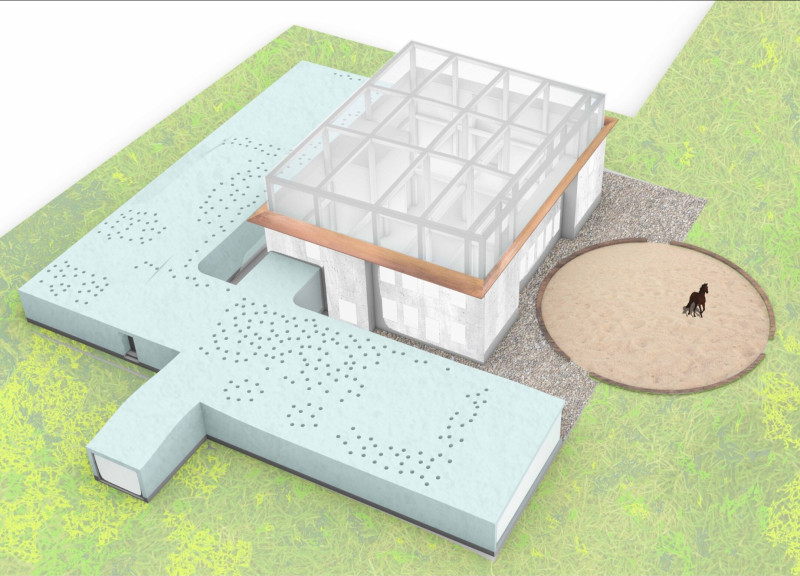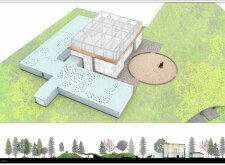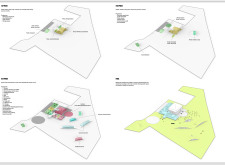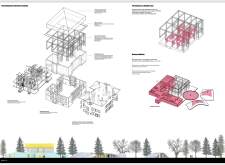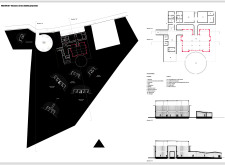5 key facts about this project
The design centers around the conversion of a former school into a museum, located in a place rich in history and community ties. Aiming to incorporate sustainability and engagement, the approach reinterprets the original structure while respecting its past. The design emphasizes flexibility, allowing the museum to cater to various functions and attract a diverse audience.
TRANSFORMATION OF SPACE
The project begins with a complete removal of the interior, allowing materials to be repurposed throughout the new museum. This decision not only minimizes waste but also honors the building's history, integrating aspects of its past into its new role. New access points are created in the existing walls, forming a main entrance and a service entrance that improve circulation and connection within the museum.
STRUCTURAL ELEMENTS
A key feature of the design is the translucent roof. It lets in natural light during the day, creating a bright atmosphere and, at night, it shines like a glowing beacon. This feature enhances the invitation of the museum while also making it highly visible in the community. Complementing this is a metal sheet taken from the old roof. This adds a modern touch while serving to connect the historical context with contemporary design.
FLEXIBILITY AND USABILITY
A wood structure is used to support the original walls and the new roof, providing a spacious interior with high ceilings. This design allows for many different layouts to accommodate exhibitions and community events. The use of temporary screens enables the space to be adjusted for various activities, further enhancing its functional capacity.
OUTDOOR ENHANCEMENTS
Future plans include creating outdoor areas for performances and exhibitions, as well as grassy hills that will serve as audience spaces and program areas. These landscape features aim to connect the museum with the natural surroundings and create opportunities for interaction between indoor and outdoor activities. This focus on blending various elements reflects a commitment to community involvement and appreciation of the environment.
Every detail in the design aims to balance the historical aspects of the original school with the practical needs of a modern museum, creating a space that supports both cultural exchange and community engagement.


